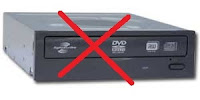Firstly, there is no one way to create a backup of your data. There are several program available on the market as well as there are features built into the various operating systems that we use that will facilitate the process. True, some are a bit complicated (these I will leave out), but there are some very simple ways of protecting your data from hard drive failure or data corruption as a result of virus or malware presence on your computer.
Secondly, there are a host of different places where you can store the backup. You can use DVDs, flash drives, external hard drives or cloud storage such as Dropbox, Google Drive, Box, Skydrive or iCloud (for the Apple fans out there) See this post.
Now lets get down to business:
For Backing up just your documents, music, videos, picture etc.
- You can simply COPY and PASTE or "burn" (if you're using DVDs) the files from your hard drive to the external storage source. DO NOT STORE THE BACKUP ON THE SAME DRIVE AS THE ORIGINAL FILES.
- You can sign up for anyone of the FREE cloud-based services mentioned above (I prefer Dropbox and Skydrive, but they're all good), install the client on your computer (this would be explained when you sign up) and simply place the files in the sync folder. This is my preferred mode of backup for my files since I will be able to access them wherever I go once I have Internet access. See this post
- You can install any of the following FREE programs, follow their simple instructions and create your backup within minutes: Backup Maker, FBackup, Genie Timeline Free 2012 or Toucan (for the more advanced power-users)
For a complete system backup (operating system + your personal files)
- If you're using Microsoft Windows Vista or 7 you can click on start and type backup. The "backup your computer" option will appear, hit enter or click on it to start the backup wizard. The instructions are pretty easy to follow from there on out.
- Based on the brand of computer you own, it may have come with some sort of custom-backup tool or program installed, you can use that too or you can go out and buy backup software (See here before spending your money), but bearing in mind that I promised to keep this simple, I thought it best to focus on the good, free programs that you can use.





























